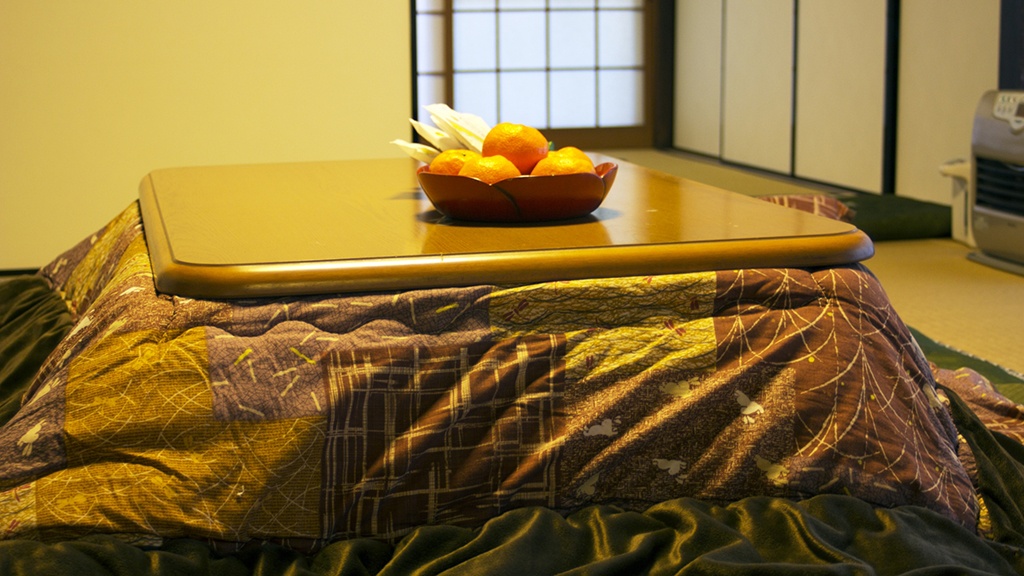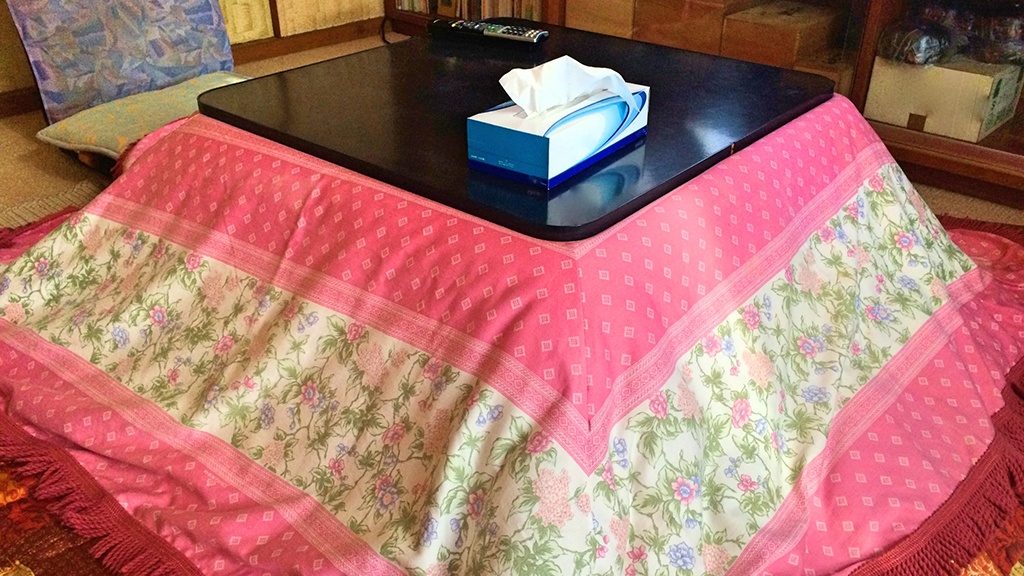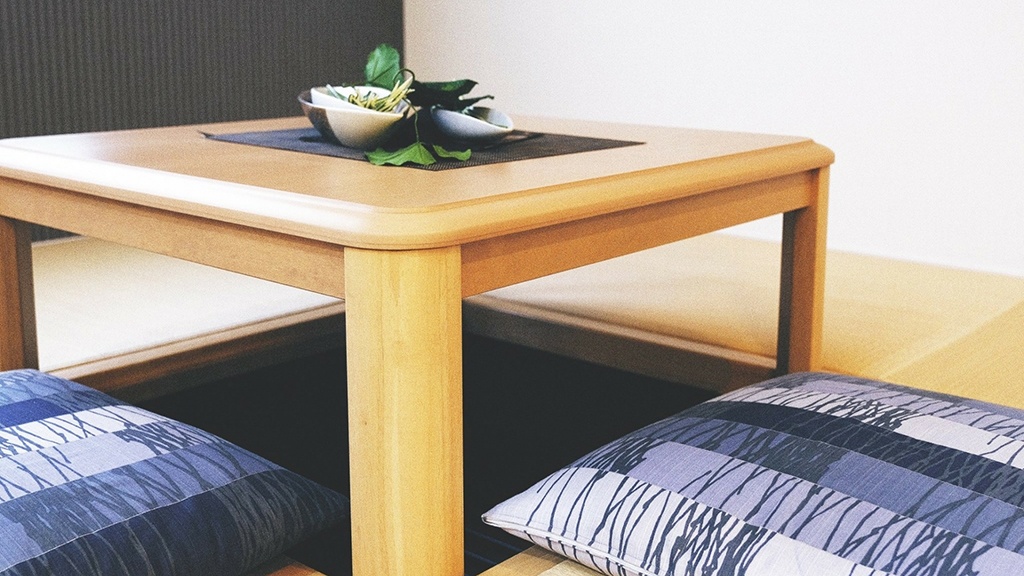Kotatsu History, Types and its Advantages

This post is also available in 日本語
The kotatsu is heating equipment useful in cold winters. You place a quilt on a heated table, and put your feet under the table to warm up. As this is often depicted in manga and anime, it is well known even overseas. On this occasion, I would like to introduce you to the Japanese winter tradition of the kotatsu.
Contents
History of the kotatsu

The kotatsu is said to have originated in the Muromachi era. At the time, there was no electricity, and the only heating source was the “irori” (fireplace built into the house). A platform was placed on top of the irori, and a kimono was placed on top of that, which was the starting point for the kotatsu.
Ancient Japanese homes were built to allow for good ventilation. This was a design built to survive the humid summers. However, when it came to winter, this made it difficult to warm up the whole house. This is the reason why “heating equipment that warms the body within a small space” developed in Japan.

In the Edo era, kotatsu that used a “Hibachi” (a kind of charcoal burning brazier used as a heating appliance) came to the fore. Unlike the kotatsu that used an irori, the kotatsu that used a hibachi was portable, and so became popular in many homes. However, as it used wood charcoal for fuel, there were many accidents such as burns and carbon monoxide poisoning.
The current “electric kotatsu” (kotatsu that use electricity as the heat source) started to be used in homes after the Second World War. The fact that the heat sources electricity means that the kotatsu can now be used safely.
Advantages of a kotatsu
Kotatsu have many advantages over other types of heating equipment.
- Effective at saving energy
As the space that it heats is small, it is possible to save on utilities. - Does not require replenishment of fuel
With a kotatsu, the effort of preparing oil as in the case of a stove is not required. - Can also be used as a table
It can be used as a kotatsu in the winter, and as a normal table in the other seasons. There are products that have been designed in a way to make it easy-to-use them in the interior, such as being able to adjust the height, and kotatsu where the heat source is not noticeable. - Room does not become dry
Contrary to heating devices that warm the whole room, like in air conditioner, the inside of the room does not dry out.
Types of kotatsu
There are two types of kotatsu.
Electric kotatsu

This is a kotatsu in which the quilt and countertop are combined with the table with the heater attached. This can be used by simply placing it on top of a carpet or tatami and attaching the plug to the socket. It can be moved easily between locations, and is cheap, so it is the type of kotatsu that is most widely used in Japan.
“Hori-Gotatsu”

This is a kotatsu where there is a hole immediately underneath the kotatsu, and the heat source is installed there. Use this by placing your legs inside the hall, and sitting you were in a chair. Generally, this is made by digging a hole in the floor. Recently, hori-gotatsu style units, combined with storage boxes with tatami on top so that a hole can be made in the middle have become available.
Modern kotatsu
The kotatsu is a heating device that has been loved in Japanese homes since ancient times, and it continues to evolve in accordance with the age. Currently a wide variety of types are available.
Kotatsu for people living alone
This is a kotatsu for people living alone. It is of a size that it is easy to use a table outside of winter. The sense of the room can be changed drastically by replacing the kotatsu futon and the mattress. Another good point about kotatsu is that the patterns can be interchanged, just as if you are changing curtains.
Kotatsu for working at home
In accordance with recently emerging needs, we have seen the release of kotatsu suitable for working at home. There are kotatsu in which the countertop has a USB port and power socket. Those tables with long legs can be used while sitting on the sofa or a chair. These are kotatsu that combine both warmth and convenience.
- If You Wonder What Should Give a Gift, This Is the Best Choice! Cool Packaged Handkerchiefs!
- Apply on UV Cream Without Getting Your Hands Dirty! Why not Have This Handy Puff?
- So Popular Character “Chiikawa” Cheers You Up! Improve Your Arched Back!
- If You Want to Improve Your Sleep Quality, You Should Change Your Pajamas! 3 Recommended Pajamas
- Conveniently 2-Way! This Product Is Useful in Both Summer and Winter.












